#revanchism
Photo
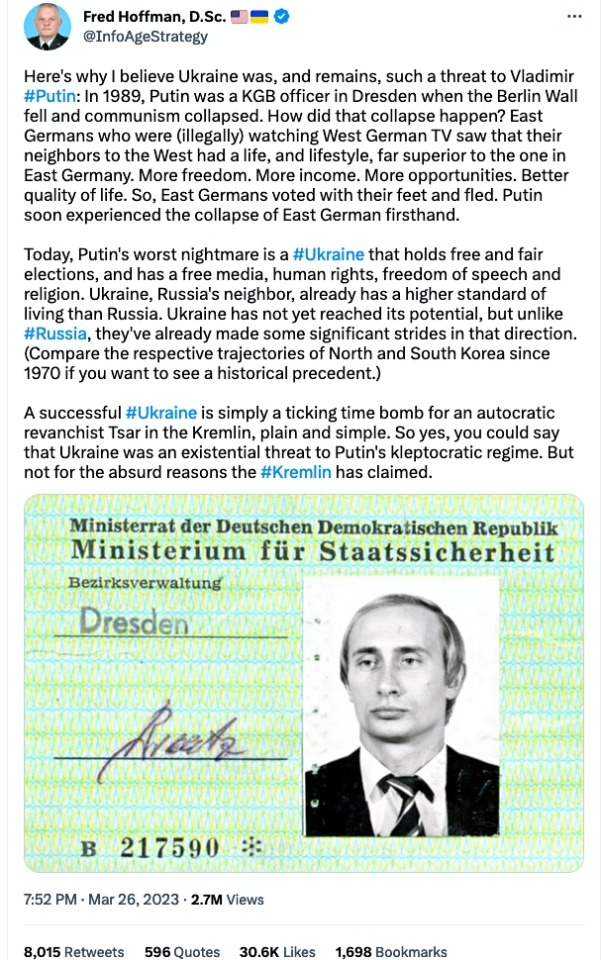
^^^ From @InfoAgeStrategy.
Prof. Fred Hoffman is a retired US Army human intelligence officer and US military attaché in Germany. He served in Germany around the same time Vladimir Putin was a lieutenant colonel in the KGB stationed in Dresden in the now defunct East Germany (”German Democratic Republic”).
Prof. Hoffman believes that Putin hates Ukraine because the Russian dictator sees it as a hotbed of democratic contagion which could spread to Russia. Putin blamed West Germany for corrupting the glorious communist East Germany with ideas about democracy, freedom, and higher standards of living.
Putin’s war is largely a clash of civilizations between modern Western democracies and kleptocratic autocracies. Putin’s invasion of Ukraine was essentially a declaration of war against the West. People who characterize the war as a “territorial dispute” are putting on public display their farcical ignorance of Russian history and Eastern Europe.
#invasion of ukraine#fred hoffman#vladimir putin#kgb#east germany#ddr#democratic contagion#putin's hatred of ukraine#clash of civilizations#putin's war against the west#revanchism#россия#владимир путин#кгб#бывший ссср#путин хуйло#восточная германия#рдр#война против демократии#путлер#союз постсоветских клептократических ватников#вторгнення оркостану в україну#україна переможе#слава україні!#героям слава!
682 notes
·
View notes
Note
the word anon is looking for is revanchism
Ohhh I thought they were obviously talking about fascism.
TIL! Thank you!
#one thing about me is that i don't have a lot of theoretical knowledge#it makes me zone out#i'm more about pattern recognition and prose lol#revanchism#colonization#anon#asks#knee of huss
1 note
·
View note
Photo
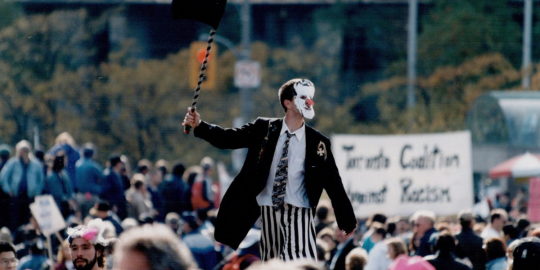
One of the more pernicious myths circulating in Ontario’s labour ranks is that the Days of Action – the big protests and strikes against the Harris Tories in the late 1990s – somehow led to the re-election of the Harris Tories in 1999.
This is complete nonsense.
Let’s examine why the Tories were re-elected in 1999. We’ll start with the economic context, then the Harris re-election strategy, and lastly the sorry state of the opposition parties. Then we’ll do a dive into the rise and fall of the Days of Action.
The Harris Recession
After Ontario’s booming 1980s, the province’s experience of the global recession of 1990-1992 was exceptionally deep and long due to a radical wave of free trade deindustrialization. The province’s large manufacturing base faced the kinds of permanent mass layoffs faced by Ontario’s American neighbours, such as Michigan, Wisconsin, Ohio, Pennsylvania and New York.
The decade also opened with a breakthrough NDP election in September 1990. With the Toronto housing market bursting around him, Peterson called an early election only three years into his majority mandate. With the Liberals above 50 percent in the polls, voters instead rebelled and elected an NDP majority. Peterson had tried to buy time with a new majority mandate. Instead, Bob Rae became the Premier of Ontario – with 37.6 percent of the popular vote.
The worst of the recession fell on Bob Rae’s NDP regime from the moment they won until the end of 1993. In 1994, signs of a recovery were dashed and the province’s economic crisis would last into 1997. Due to a new American boom, a strong recovery for Ontario was enjoyed in 1994, but the Harris Tories were elected in 1995 and sent the economy back into recession. Unemployment went up again and growth flat-lined in 1996. Harris and his “Common Sense Revolution” was shock therapy: infrastructure and housing projects were slashed by billions, labour laws decimated, budgets slashed, and 13,000 pink slips for 65,000 Ontario Public Service workers.
The Harris Recession was also deepened by the 1995 federal budget under the Chretien/Martin Liberals. The Liberals made Mulroney’s squeeze on provincial transfers permanent.
The Liberals also mauled Unemployment Insurance just like Mulroney had. Between the years 1990 and 1996, unemployment insurance eligibility was cut in half from 80% of unemployed to 40% of unemployed. The cuts to UI under Mulroney ensured that when unemployment climbed over 10 percent in 1992 and 1993, a lot more people found themselves ineligible or running out of UI and having to go collect social assistance. Ontario’s welfare rolls exploded, peaking at 1.3 million people (12 percent of the province) between 1993 and 1995.
While the Tories took Ontario back into recession, the American economy continued its GDP growth boom, and hitting 4.5 percent in 1997 and 4 percent annual growth rates through to 2001. With Ontario’s biggest trading partner sucking up imports, Ontario’s bruised manufacturing sector began to revive. In late 1997, the unemployment rate began a four-year decline. At the very same time, the Toronto-centred housing crash bottomed out after an incredible 8-year slide.
The housing crisis was one of the forgotten factors of why working people in Ontario felt so insecure during the 1990s recession. In the absence of good jobs and real social security programs, home ownership and growing home prices became increasingly attractive as the new family income security plan for many working people. The government-financed co-operative housing alternative was destroyed by Mulroney, Chretien and Harris. In this leaner, meaner Canada of the 1990s, homes became the privatized social security system – but only if you could inherit or afford a mortgage.
As unemployment fell and the American boom went into overdrive in 1997, the Chretien Liberals won a second federal majority with a promise to reinvest in shredded social programs. The American boom and mild federal reinvestments put an end to the austerity offensive in Ontario. There was a sense of the worst really being over. In 1998, the Liberals and media were busy declaring victory against the deficit. The federal budget surplus was heavily financed by the Employment Insurance surplus accrued by halving eligibility, and a raid of federal government worker pension surpluses.
By the spring of 1999, Ontario’s economic fortunes had largely reversed thanks to the American boom and the end of federal funding cuts. Mike Harris, his party, and their business partners boldly claimed the Common Sense Revolution was responsible for the recovery.
The Best Election Money Can Buy
Despite improving economic circumstances, the Harris Tories were not going to count on the recovery to help them win the election. They needed a public relations machine the province had never seen. During the 28-day election campaign, they set an Ontario election spending record of $23.5 million. The NDP and Liberals together spent less than $6 million. The election’s much-hyped and record-setting “third party” spending was just over $6 million and spread out across 29 registered advocacy groups. The Tories doubled the combined spending of the two opposition parties and all advocacy groups.
The Tories made all this possible by rewriting election campaign spending laws, campaigning through public money under the guise of ministerial advertising, and getting exceptionally fat donations from the business class and the wealthy. More than two-thirds of the money raised by the central Tory campaign came from corporations. A fair number of them were six-figure donations.
The Tories also raised the limit on individual donations from $14,000 to $25,000. This was chump change for the wealthy, not working people. The Tories also effectively exempted party leader spending limits. The Tories spent $1.6 million on their election leadership tour. The Liberals spent $392,000, the NDP only $65,000.
According to Robert MacDermid’s groundbreaking study of the 1999 election’s spending, the Harris Tories raised overall campaign spending limits in Ontario by 114 percent.
To maximize their money advantage, the Tories deliberately also shortened the campaign period from 40 to 28 days in order to allow maximum unrestricted campaigning before the restrictions of the official election campaign. The Tories spent as much money on advertising during the month before the election as they did in the official 28-day election campaign.
On two of their weakest fronts, healthcare and education, the Tories spent at least $20 million in public money before the election through large ministerial advertising campaigns.
With the economy recovering and a massive war chest, the Tories only had to worry about their opposition.
NDP betrayal, labour divided, right-wing Liberals
There was no effective electoral opposition to the Harris Tories in 1999. After the disasters and disappointments of the 1990-1995 NDP government, the NDP vote in Ontario plummeted to historic lows. From 1.5 million votes in 1990, the party fell to 850,000 in 1995. In 1999 that number was 550,000. The pattern was even worse in federal terms. The NDP won 20.1 percent in the 1988 election, collapsing to 6 percent in 1993, and only 10.7 percent in 1997.
For some, voting NDP was a principle. The leadership of many major unions remained loyal and lined up behind the NDP through the 1990s. However, many unions broke with the Ontario NDP over the 1993 Social Contract. The Social Contract was an NDP plan to cut $2 billion out of government labour costs to fight a $13 billion deficit. The unions rejected opening up their union contracts to impose concessions, so the Social Contract was passed as legislation. It forced open collective agreements covering hundreds of thousands of public sector workers and imposed concessions. Of all the concessions, the forced unpaid days off – “Rae Days” – came to symbolize the betrayal of the NDP.
The Social Contract was a catastrophe, and a massive gift to the NDP’s right-wing and business opposition. In one of Bob Rae’s apocryphal stories in his memoirs, Rae writes that former Canadian autoworkers president Bob White tore a strip off Rae and the other NDP premiers, Romanow of Saskatchewan and Harcourt of BC, saying “Why the hell should working people see all their benefits and everything we’ve been fighting for all these years go down the drain because you guys have bought into all this neo-conservative economics. You’re elected to fight for our people, not to stick your nose up Mulroney’s ass.” Curiously, White responded to this quote in Rae’s memoirs by denying he ever said it. Either way, White, who had become the Canadian Labour Congress president, opposed the Social Contract.
The Social Contract split the labour movement in half. The “Common Front” unions of the public sector and the autoworkers (CAW) voted successfully to pull the Ontario Federation of Labour out of the Ontario NDP at the 1993 OFL convention. The unions loyal to the NDP, the “Pink Paper” unions, walked out of the convention in protest. In the 1995 election, the Common Front unions didn’t put a lot of muscle behind the NDP. By 1999, unions like CUPE were soft on supporting the NDP, and the CAW endorsed anti-Harris strategic voting. The NDP were never a threat to the Tories in 1995 or 1999.
The 1995 election was a surprise because the Liberals went in with over 50 percent support in the polls. However, they cratered as the Tories were elected on a Common Sense Revolution platform of “tough love” austerity, scapegoating welfare recipients, repeal of employment equity (what Harris called “the quota law”), as well as big promises like a 30 percent income tax cut and a plain-as-day commitment to not cutting healthcare. The Tories would decimate healthcare with cuts, but they did deliver the income tax cut – over half the cut went to the wealthiest 10 percent.
Once elected, Harris declared war on everyone and everything. It took a few months for labour leaders to scramble a response – they initially thought they could talk Harris out of his Common Sense Revolution. As the protest movement grew in the fall of 1995, the November 1995 OFL convention saw an uneasy peace struck between the Common Front and Pink Paper union leaders: everyone was back in the NDP again as the Pink Paper unions wanted, and the Days of Action protests and strikes would begin as the Common Front unions wanted.
But the Pink Paper unions spent the next two years undermining the Days of Action through a strategy of non-participation in strikes, and taking over labour councils to throttle support. Days after the massive Metro Days of Action in October 1996, the Pink Paper unions came out publicly against the entire Days of Action campaign. Their expressed strategy for defeating Harris was shelving the Days of Action and waging a “union education” campaign to get workers to vote NDP again.
The NDP, however, never disavowed the right-wing turn under Rae, and never apologized for the Social Contract. This was one reason the CAW and CUPE leaderships remained critical and hostile to the actions of the Pink Paper unions during the Days of Action.
When the November 1997 OFL convention arrived, long-serving OFL president Gord Wilson decided not to seek re-election. The Pink Paper and Common Front factions put up competing candidates. At the last moment, the OPSEU leadership broke ranks with the Common Front and threw its support behind the Pink Paper candidate, Wayne Samuellson. Samuellson would win by a narrow margin. While convention delegates voted for a province-wide general strike in 1998, the Days of Action were formally shelved at an OFL meeting of to union leaders in July 1998 – a full year before the expected election date.
While CUPE eventually decided to endorse the NDP for the 1999 election, the NDP campaign was without enthusiasm. Nobody expected a miracle as the NDP had been languishing in the polls between 15 and 20 percent support. Many unions, notably CAW, OPSEU and also the teacher unions, opted for strategic voting to block another Tory majority. Both the pro-NDP and strategic voting election strategies failed miserably. The Tories were re-elected with 100,000 more votes, while the NDP vote collapsed further from 850,000 to 550,000.
Hardly their first choice of government, a lot of people hoped the Liberals would oust Harris. For much of 1997 and 1998, the Liberals were ahead of the Tories in the polls. The Liberals gained 460,000 votes in the election, and rose from 31 to 40 percent of the vote. However, their new leader, Dalton McGuinty, was an unknown figure and won the party leadership in 1996 on a right-wing platform. In the 1995 election, the Liberals had also run on a platform as bad as the Harris Tories. The Liberals couldn’t bring themselves to campaign on reversing the Common Sense Revolution. Ultimately, the Ontario Liberals agreed with it. This is exactly how they would govern Ontario during their 2003-2018 regime.
Did the Days of Action get Harris re-elected?
From 1996 to early 1999, the Harris Tories were usually second in the polls. Their support was pushed down at the height of the Days of Action and opposition to the Common Sense Revolution between late 1995 and late 1997. The protest movement of mass rallies, strikes, petition drives, high school walkouts, and countless small local protests caused a permanent political crisis for the Tories. This sprawling and sometimes chaotic protest movement kept all the crucial issues on the front burner: hospital closures, school cuts, attacks on injured workers and the poor, downloading of costs and services, the destruction of the housing program, anti-democratic attacks on municipal and school board governance. The list was long.
The protest movement also won important defensive victories that have since been forgotten. The campaigns against hospital closures in 1997 forced the government to cancel a $500 million cut to hospital funding and declare all 66 rural and northern hospitals safe from mergers and closure. Bill 136, which would have completely suspended the right-to-strike for all public sector workers over four years, was defeated when CUPE started holding hugely successful strike votes for a province-wide shutdown. Mandatory workfare for welfare recipients was also defeated when CUPE boycotted the United Way for its participation in the workfare pilot. This destroyed the workfare pilot and forced the government to adopt a non-mandatory voluntary workfare program. Toronto-wide childcare strike in July 1995 and province-wide childcare strike in November 1995 derailed potential government plans to wipe out crucial subsidies for low-income parents and wage subsidies for childcare workers.
Because the movement was largely led by unions, it was not loved by the media and was not actively supported by the Liberals. However, both the media and Liberals were pulled by the protest movement into taking positions and actions that legitimized protest and civil disobedience. The corporate media was still very anti-union, but there was regular and firm opposition to Tory policies and ideology.
On several occasions, the Tories were even routed by aggressive journalism, such as the exposure of OPP violence against OPSEU pickets at Queen’s Park. The media also amplified popular support for the teachers’ movement and strike against Bill 160. At times, the corporate media was being pushed and pulled – but never won over – by the movement into taking meaningful stances on important issues and incidents.
The same is remarkably true of the Ontario Liberals. In the hot autumn of 1995, when the Days of Action strikes began, Liberal MPP Alvin Curling (the only black MPP at the time) conducted a one-man filibuster and sit-in against the Omnibus Bill 26. The Harris Tories intended to ram through Bill 26 with no consultations. Bill 26 was a blueprint for Stephen Harper’s omnibus bills. Introduced at the end of 1995, Bill 26 was the keystone legislation of the Common Sense Revolution. It modified 47 piece of legislation and was 2,200 pages long. The bill was designed to massively centralize power in the provincial cabinet so brutal restructuring and cuts could be carried out more faster and with little legislative opposition. Curling’s sit-in forced the Harris Tories to concede public consultations over a 6 week period. This provided a crucial window of time for the movement to build against the Tories. It was during this 6-week period that the Tories began to slip significantly in the polls, falling behind the Liberals for the first time.
Last but not least, the McGuinty and the Liberals were pulled into effectively supporting the teachers’ strike against the government. While too spineless to openly support strike action, McGuinty barnstormed the province in the weeks leading up to the strike, speaking to mass meetings of teachers about the necessity of defeating Bill 160. Bill 160 was a massive assault on working conditions, union rights, classroom resources, student learning, and education funding. While Rae’s former Minister of Education Dave Cooke publicly admonished the teachers for threatening a strike against Bill 160, McGuinty at least offered tacit support. McGuinty’s actions served to reinforce the righteousness and legitimacy of the teachers’ actions.
The teachers’ strike (which was called a “protest” by teachers for legal purposes) was the last major conflict between workers and the government over the Common Sense Revolution. The fight was so bruising, it marked the end of the Common Sense Revolution. In their fight with the teachers, the Tories were driven down to the low 30s in the polls. Earlier in the year, during their efforts to close hospitals, Harris faced a backbench rebellion and was forced to back down on most hospital closures. By the end of 1997, it was widely believed that Harris was presiding over a one-term government.
The teachers’ strike was defeated when three of the five teacher union leaderships called off the strike at the end of its second week – with absolutely no concessions from the government. Huge numbers of teachers were upset and local rebellions erupted against the union leadership. But within three days of the sell-out, all five unions had called off the strike. The defeat was incredibly hard because the public was clearly behind the teachers, and the government had just lost a court injunction against the strike.
Harris regains momentum
A great tragedy was the absence of any sympathy strike with the teachers. This meant the teachers could not gain any more leverage against the government beyond their 126,000-strong strike. This was likely a significant factor in the decision by some union leaders to throw in the towel. Education workers with CUPE were best poised to join the strike, and CAW President Buzz Hargrove had strongly suggested autoworkers would join the teachers with a sympathy strike, but this was not to be. Only a few weeks earlier, CUPE’s strike mandates for a province-wide illegal strike had succeeded in defeating Bill 136. However, there was never an effort to forge a solidarity pact that would link the fights against Bill 136 and Bill 160.
In the wake of the Bill 160 defeat, the November 1997 OFL convention mandated a province-wide general strike. Delegates who called for a fixed strike date were ignored. As if to ensure demoralization and defeat, union leaders let six months pass before the next Days of Action in St. Catharines. After one more Day of Action in Kingston, the whole project was quietly shelved at an OFL affiliates meeting in July. The general strike never came.
There were some efforts to revive the movement, such as the 10,000-strong demonstration in Ottawa in October 1998. However, by October, the politics on offer from union leaders was all about voting. It wasn’t about stopping the Harris agenda through mass action: hitting the private and public sector with strikes and disrupting “business as usual” for the government and their business pals.
The union leaderships may have been divided over their election strategies, but they all agreed that the movement on the streets, in the workplaces, and in the schools was over. Fighting the Tories was now about casting a ballot.
Missed opportunities
If the teachers’ strike was a missed opportunity for an escalation of struggle against the Harris Tories, there were other missed opportunities, too. The OPSEU strike of 1996 kicked off in late February, 1996. Leading up to the strike, the protest movement was still escalating to dizzying heights. The London Day of Action in December 1995 had been a huge, unexpected success. The city’s public sector and manufacturing was shut tight and 15,000 marched in -25 weather. In January, 35,000 marched on Queen’s Park in defence of public education. The Hamilton Days of Action had a big strike on Friday and a march of 20,000. The following day, 80,000 marched through Hamilton. The province-wide OPSEU strike kicked off two days later on Monday.
Facing 13,000 job losses (out of 65,000 jobs), massive contracting out, and an assault on pensions, the strike was the Ontario Public Service’s first. The union had only been awarded the right-to-strike in 1994 in what was one of the few lasting labour reforms from the NDP government. Taking a page out of the Reagan and Thatcher handbook, the Tories were happy to go to war with this union. But the Tories were arrogant and OPSEU proved far stronger than expected. Advance organizing and education, detailed in OPSEU member David Rapaport’s excellent history No Justice, No Peace, ensured the union defied the government’s expectations. For example, OPSEU succeeded in minimized scabbing not long after the Tories repealed anti-scab legislation with their Bill 7 assault on workers’ rights.
There was a major opportunity during the OPSEU strike to use the Days of Action as a vehicle to aide OPSEU’s cause, and increase the pressure on the Tories and their Common Sense Revolution. The Days of Action were originally predicated on building capacity towards a province-wide shutdown. However, only two weeks into the OPSEU strike, the OFL announced a Day of Action for April 19 in Kitchener-Waterloo. As many OPSEU members pointed out, there was a good chance their strike would be over by April 19. Furthermore, calls from local labour leaders to expand the Days of Action across a region or multiple cities were ignored by the senior union leadership. There was simply no effort to link up the OPSEU strike with the Days of Action.
Even after the OPP ran riot at Queen’s Park against hundreds of OPSEU pickets on March 18, no wider protest action was called in response to the police assault, let alone a strike. The riot hardened the resolve of the strikers and the movement but this was not channelled into a political counterattack.
The general strike that never happened will be talked about endlessly. Could it have happened? Was there a moment when it should have been called? Would it have worked? Rather than getting hung up on the what-if game, the real question is what was required to deepen the political crisis for the Tories.
The Days of Action strategy, as it was originally conceived, was sound: build up working-class organization and confidence through a few city-wide one-day strikes and mass marches, and then expand that disruption so as to increase the pressure on the government. The public sector unions would disrupt the government, while the private sector unions would pressure the business class to view the Tory agenda as too costly, thus sapping business support from the Tories.
The strategy lost its dynamic threat to the Tories when union leaders decided to throttle it during the OPSEU strike – just when it needed to grow. Several months after the OPSEU strike, when the Metro Days of Action shut down Toronto and put over 150,000 into the streets, Harris was able to say with some comfort, “good show, good parade, good numbers.” Originally terrified and outraged by the Days of Action, the media was now happy to mock the protests as empty symbolism.
Nevertheless, the Days of Action strategy was instrumental in driving down Tory support until the aftermath of the Bill 160 defeat. It gave coherence and purpose to a movement of hundreds of thousands, and the sentiments of millions. It also pulled in the opportunistic Liberals and fairweather media behind the only opposition the Harris Tories ever had: a workers’ movement. But union leaders never raised the stakes. Their pessimism about the membership, blind party loyalties, pissing matches, and just shitty politics, all got in the way of using mass action as the only means of actually halting the unfolding Common Sense Revolution. As one sympathetic columnist would write after the Days of Action were quietly shelved, the unions turned out to be a “paper tiger”.
Mass labour action is the only hope
In the absence of this movement, the media narrative soon changed. The health of the Tory government became a question of polling data and the game of message control, not issues forced on to the front page through strikes and protests. An economic recovery driven by an American boom and a lessening of federal austerity measures also began to drive down unemployment, providing favourable conditions for the incumbent Tories.
But Ontario’s economic recovery had nothing to do with the Tories. The Common Sense Revolution’s brutal cuts to jobs, social programs and infrastructure had in fact delayed a recovery by two full years. With the protest pressure dissipating, the Tories were freed up to focus their immense corporate and taxpayer resources on an their re-election campaign.
The class war receded, the Tories recovered, and the untested Liberals and unpopular NDP couldn’t mount a serious electoral challenge. The Tories won re-election. They went ahead with their hydro privatization plan, which proved disastrous and cost them the 2003 election. The deadly Walkerton E.Coli poisoning in May 2000 caused by water safety privatization also destroyed the government’s credibility. The death of Kimberly Rogers and the OPP murder of Dudley George haunted Harris, who resigned in 2002. His replacement, Premier Ernie Eves, led the party to defeat in 2003, losing ten points and over 400,000 votes. The Liberals came to office and for 15 years they kept the pro-business permanent austerity agenda intact.
The most significant damage of the Common Sense Revolution – the entire restructuring of how the provincial state operated – was done primarily between 1995 and 1997. This was precisely when the protest and strike movement was hottest. Unfortunately, the Days of Action strategy was undermined from start to finish despite being the only hope we had to stop the Common Sense Revolution in its tracks. Defeating the Common Sense Revolution never fundamentally hinged on the 1999 election. But if there is blame for Harris being re-elected, the strategy of shelving workers’ mass activity – protests, rallies, strikes – in favour of a narrow focus on the ballot box is what lost the 1999 election.
- Doug Nesbitt, “Why did Harris win re-election in 1999?” Rank and File. September 13, 2018.
#mike harris#conservative party of ontario#ontario history#ndp#days of action#common sense revolution#ontario politics#social compact#reactionary politics#neoliberalism#revanchism#working class politics#working class struggle#capitalism in canada#liberal party of ontario
2 notes
·
View notes
Text

#politics#international politics#mongolia#russia#russia ukraine war#Elbegdorj Tsakhia#mongol empire#irredentism#revanchism
0 notes
Text
Consistency and Outcome
I am not weighing in on any particular situation in the world, but a very popular stance, almost a reflex, for some, is to side with people seen as indigenous, even if a minority. This is, politically speaking, revanchism.
Apart from any practical considerations, and fully conceding that there have been monstrous cases of tyranny of the majority (e.g. Gentiles in the Third Reich), a deeper analysis of history would lead us to question whether it would be possible to hold such a stance consistently.
For instance, if we look at England: It was first owned by the Beaker Folk. Although some have speculated that there is direct Beaker ancestry in the southeast of Wales, this is unproven and possibly unprovable.
The Celts took the land from the Beaker Folk, the Romans from the Celts, the Anglo-Saxons from the Romans, the Vikings (Danelaw) from the Anglo-Saxons (long enough to change our language such that days of the week are named after Norse deities), the Normans then took it from both, and some would describe the Glorious Revolution as a successful Dutch invasion.
If we took a revanchist position, who would be the indigenous people we could identify, and then, even if we could, how would we return England to them?
There is no outright reason that first ownership, if it was in the past, automatically gives the right to take land owned in the present by persons (descendants) who were not themselves responsible for taking the land... on the other hand, there is nothing innately sacred about the majority.
Would, perhaps, a better stance be: Which side, if given power, would use it more responsibly? Before that question is even asked, moreover, the question of whether or not peace is possible must be asked, and considering the human consequences of war, peace must be preferred, and strongly so.
0 notes
Link
Recycled Nazis
1 note
·
View note
Text
Last month, India’s Union Minister Prahlad Joshi had described the mural as a depiction of “Akhand Bharat”, or unified India.
“Akhand Bharat” is a concept espoused by Hindu nationalists envisaging that neighbouring countries Afghanistan, Bangladesh, Bhutan, India, Maldives, Myanmar, Nepal, Pakistan and Sri Lanka would become part of India.
1 note
·
View note
Text

Revanche de la femme - Feminine Inspiration
183 notes
·
View notes
Text

Kwannon (Revanche / Psylocke) Reading Guide
Were Kwannon's body is well known she herself had been dead for decades after her time with The X-Men as Revanche. Coming back to life Kwannon took the name Psylocke and has joined an array of teams using her lethal fighting skills alongside her telepathy and telekinesis. This reading order follows her appearances throughout the years.
Bolded: she's a main character/part of the team or it is an important issue for her. Italic: she's not necessarily a main character but still has interesting moments. Normal: She appears but it is not entirely important to her character.
Introduction + Body Swap
X-Men (1991) #17, #18, #20-#24
X-Men (1991) Annual #2
X-Men (1991) #25-#28
X-Men (1991) #31 [Death]
Resurrection
Hunt for Wolverine: Mystery in Madripoor (2018) #4 [only in one panel]
Uncanny X-Men (2018) #16-#20
Krakoa
Fallen Angels (2020)
Hellions (2020) #1-#11
Excalibur (2019) #18-#20
Hellions (2020) #12-#15
Inferno (2021) #1 [brief appearance but she becomes a war captain]
Hellions (2020) #16-#18
Marauders (2019) Annual #1
Marauders (2022)
Love Unlimited Infinity Comic (2022) #34-#36
Captain Marvel (2019) #43-#49
Fall of X
Hellfire Gala (2023) [only appears briefly but this story is important for context]
Uncanny Avengers (2023)
#will continue updating#thanks to the server for encouraging me to post this lol#kwannon#psylocke#revanche#xmen#reading order#reading guide#comic reading guide#comics#marvel comics
98 notes
·
View notes
Text
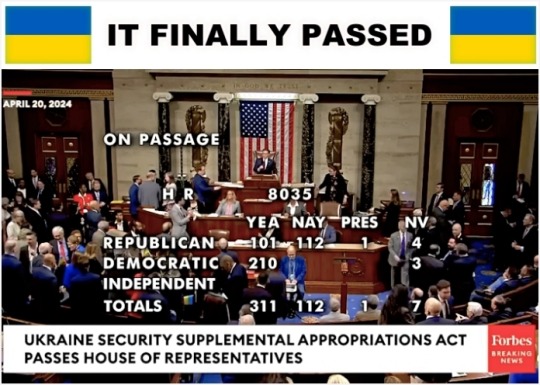
Several months late, the aid package for Ukraine passed in the House of Representatives. All voting Democrats voted YEA while a majority of Republicans voted NAY.
You can see how your Representative voted here.
The most unseemly vote came from Victoria Spartz (R-IN-05). She is the only House member born in Ukraine yet she voted against saving her native land from genocidal Russian invaders. She is trying to out-MAGA a primary opponent by showing GOP voters in Indiana's 5th district how irrationally pro-Trump she is. She's an example of how many Republicans office holders have put pleasing Trump ahead of personal beliefs and morality.
This vote is clearly a loss for Donald Trump and is a bigger loss for his boss Vladimir Putin.
HR 8035 now heads back to the Senate to reconcile minor differences and should be approved Tuesday. President Biden will expeditiously sign it into law and aid can then immediately flow to Ukraine.
US House approves major military aid package for Ukraine
#invasion of ukraine#ukraine#aid for ukraine#stand with ukraine#us house of representatives#118th congress#hr 8035#victoria spartz#in-05#donald trump#maga#russia's war of aggression#russian imperialism#revanchism#democracy vs. dictatorship#владимир путин#путин хуйло#путлер#путин – это лжедмитрий iv а не пётр великий#путина в гаагу!#геноцид#россия - террористическая страна#агрессивная война россии#руки прочь от украины!#будь сміливим як україна#разом – до перемоги!#деокупація#україна переможе#слава україні!#героям слава!
9 notes
·
View notes
Text

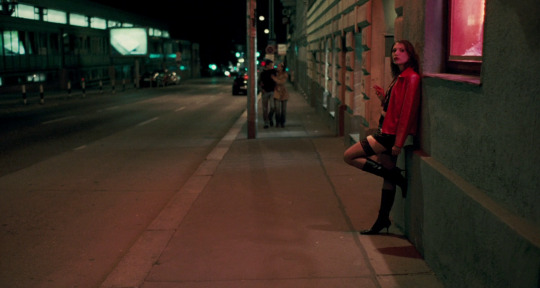




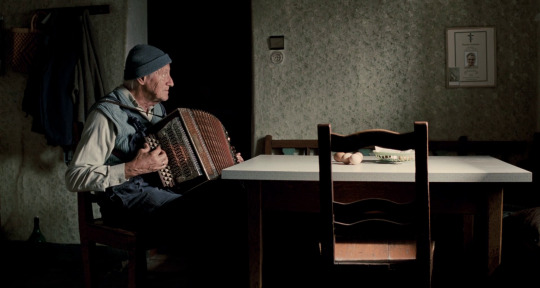



Revanche (2008) | dir. Götz Spielmann
#revanche#götz spielmann#johannes krisch#irina potapenko#hannes thanheise#ursula strauss#andreas lust#films#movies#cinematography#screencaps
34 notes
·
View notes
Text

“Aliens! I found aliens! And one of them cut my throat!” - Uldren Sov, Revanche I
Was rereading Marasenna and had to draw the part where Uldren discovered the Eliksni.
#destiny 2#destiny 2 art#destiny fanart#drawing#destiny art#digital art#destiny guardians#destiny the game#art#sketch#destiny uldren#uldren sov#prince uldren#revanche#Marasenna#destinythegame#destinyuldren#the awoken#blood#stab wound#cut#procreate#my art#digital drawing#avojam art
140 notes
·
View notes
Text



madame bovary gustave flaubert trans. eleanor marx aveling // the vampire lestat anne rice // amc interview with the vampire
#iwtv#vampire posting#eleanor marx's translation is soooo good for this the word 'impotence' tussy we are kissing. leave edward you don't need him#also francis steegmuller renders 'revanche' as 'compensation' instead of 'revenge'#whole different vibe#anyway i am once again asking is this anything#iwtv intertext
90 notes
·
View notes
Text


Lucas Werneck uploaded a sketch of Betsy's new costume for her Dead X-Men #3 debut and she's thankfully not in her Captain Britain gear.
I wonder what her code name will be now since Kwannon goes by Psylocke? Hopefully they don't pull a 90'S X-Men thing and call her Betsy the way Jean was just referred to as Jean.
Hopefully they use the code name Revanche since Kwannon's no longer going by that.
#Betsy Braddock#psylocke#kwannon#captain britain#revanche#x-men#marvel comics#dead x-men#lucas werneck
21 notes
·
View notes
Text

Collab by jamiefayx, pengpengart, daniellestpierreart, artoflucas, serge_towers, crimsonartsillustration and thefranchizeart
#dazzler#alison blaire#xmen#marvel#fan art#character design#storm#rogue#ororo munroe#kwannon#shadowcat#kitty pryde#revanche#cyclops#scott summers#jean grey#lockheed
12 notes
·
View notes
Link
Annoying the neighbors
0 notes